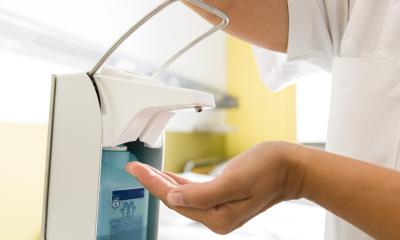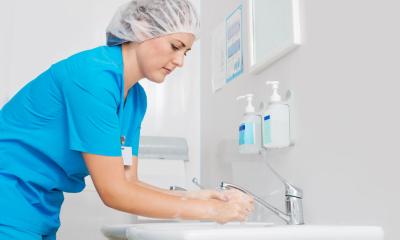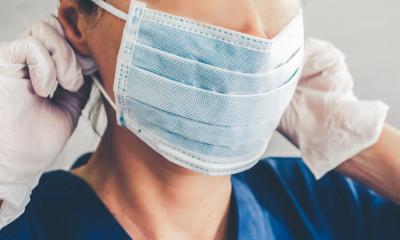Image source: Adobe Stock/VILevi
News • Follow the evidence
Optimising preventive measures to stop surgical infections
A new research review to be given at a pre-congress day for this year’s European Congress of Clinical Microbiology and Infectious Diseases (ECCMID 2024, Barcelona, 27-30 April) will look at improving preventive measures to stop surgical infections.
It will also ask why we are doing what we are doing, especially when some interventions lack quality evidence or in fact in some cases any evidence to back them. The presentation will be given by Professor Hilary Humphreys, RCSI University of Medicine and Health Sciences, Dublin, Ireland – who will spell out the need for evidence from which to make recommendations.
One example is the recommendation to have a non-disinfectant (ordinary soap) or disinfectant shower before to surgery. Prof Humphreys will explain that there are currently no studies to show that this prevents or reduces surgical site (wound) infections (SSIs) – hence, no formal recommendation with evidence to back it up can be made. He says: “However, expert opinion is to encourage patients to shower/bathe before surgery for personal hygiene reasons, or to consider using alternatives (e.g. alcohol/cleansing wipes) immediately before operation if patients are unable to shower or bathe.” He adds: “But we shouldn’t delay operations if the patient is unable to shower/bathe before the surgery. We should also instruct patients not to shave the surgical area before surgery, as this may damage the skin and actually contribute to developing a SSI.”
Many intra-operative rituals and behaviours are not evidence-based…there is scope for refinements and modifications in surgical techniques and approaches, with the need for large and well-conducted trials
Hilary Humphreys
What should be implemented (and is backed by evidence) includes laying out surgical instruments for use in surgery as close to the time of the operation as possible. This prevents the instruments becoming contaminated before the surgeon uses them.
There is also a lack of evidence on the risk of contracting a SSI if staff leave the operating theatre with their scrubs (medical clothing) on and then return to the operating theatre without changing in to fresh or new scrubs. Studies looking at the contamination of the operating theatre clothing or scrubs after returning to the operating theatre have reported mixed results. Prof Humphreys explains: “Again it is not appropriate to make a formal recommendation here, but it is good practice to change or cover operating theatre attire (for example using a single-use disposable gown) and change footwear if leaving the operating theatre complex with the intention of returning. This is especially the case if in the individual has visited an ICU or another part of the hospital where transmissible pathogens and or antibiotic-resistant bacteria may be present.”
Prof Humphreys will also review antibiotic prophylaxis. A retrospective multi-centre cohort study from Switzerland, involving 117,348 patients receiving cefuroxime found that the overall SSI rate was 2.4%. However, this varied depending on when patients received their antibiotics before the surgery – the SSI rate for the 0-30 min group was 1.9%; for the 31-60 min group 2.4%; and for the 61-120 min (i.e. one to two hours before surgery) group 3.7%. Prof Humphreys says: “These results show that cefuroxime should be administered 1 hour before, and ideally within 10-25 mins before initial incision. While the principles of surgical antibiotic prophylaxis are well understood, compliance is often poor and further refinements may reduce SSI, with the use checklists and tight timelines as are used in the aviation industry.”
Other parts of his talk will look at the impact of high-volume practices on reducing the chances of SSIs, the changing of gloves and instruments during surgery and the cleanliness of operating theatre air. On this last point Prof Humphreys states, “Controversy continues to exist about how clean operating theatre air should be.”
He concludes: “Many intra-operative rituals and behaviours are not evidence-based…there is scope for refinements and modifications in surgical techniques and approaches, with the need for large and well-conducted trials. These are possible if we learn from recent well conducted studies such as the example of the impact of changing instruments and gloves during surgery.”
For future research, Prof Humphreys suggests:
- Assessing the impact on SSI of abolishing some operating theatre rituals
- The value of ultraclean ventilated theatres in high-risk implant surgery
- Enhancing surgical prophylaxis through human behaviour modifications & digital prescribing to optimise the timing of administration
- Multi-centre trials on operative techniques, using the examples recent successful methodologies
Source: European Society of Clinical Microbiology and Infectious Diseases
02.03.2024





